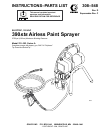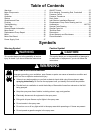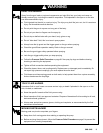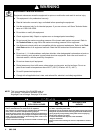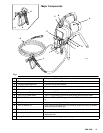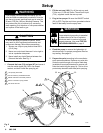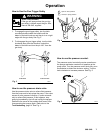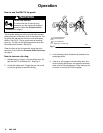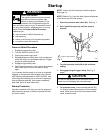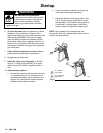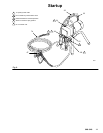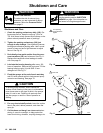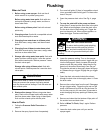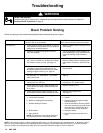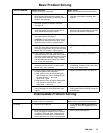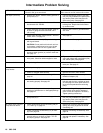
308-548 3
TOXIC FLUID HAZARD
Hazardous
fluid or toxic fumes can cause serious injury or death if splashed in the eyes or on the
skin, inhaled, or swallowed.
D
Know the specific hazards of the fluid you are using.
D
Store hazardous fluid in an approved container
. Dispose of hazardous fluid according to all local,
state and national guidelines.
D
Always wear protective eyewear
, gloves, clothing and respirator as recommended by the fluid
and solvent manufacturer
.
MOVING
P
ARTS HAZARD
Moving
parts can pinch or amputate your fingers.
D
Keep clear of all moving parts when starting or operating the pump.
D
Before servicing the equipment, follow the
Pressure Relief Procedure
on page 9 to prevent the
equipment from starting unexpectedly
.
INJECTION HAZARD
Spray
from the gun, leaks or ruptured components can inject fluid into your body and cause ex
-
tremely serious injury
, including the need for amputation. Fluid splashed in the eyes or on the skin
can also cause serious injury
.
D
Fluid injected into the skin is a serious injury
. The injury may look like just a cut, but it is a serious
injury
. Get immediate medical attention.
D
Do not point the gun at anyone or at any part of the body
.
D
Do not put your hand or fingers over the spray tip.
D
Do not stop or deflect leaks with your hand, body
, glove or rag.
D
Do not “blow back” fluid; this is not an air spray system.
D
Always have the tip guard and the trigger guard on the gun when spraying.
D
Check the gun dif
fuser operation weekly
. Refer to the gun manual.
D
Be sure the gun trigger safety operates before spraying.
D
Lock the gun trigger safety when you stop spraying.
D
Follow the
Pressure Relief Procedure
on page 9 if the spray tip clogs and before cleaning,
checking or servicing the equipment.
D T
ighten all fluid connections before operating the equipment.
D
Check the hoses, tubes, and couplings daily
. Replace worn or damaged parts immediately
. Do
not repair high pressure couplings; you must replace the entire hose.
D
Fluid hoses must have spring guards on both ends, to help protect them from rupture caused by
kinks or bends near the couplings.
WARNING
WARNING



